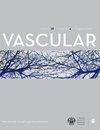Systematic review of clinical guidelines and consensus statements concerning heparin and protamine dosing and monitoring of anticoagulation levels for non-cardiac arterial procedures.
IF 1
4区 医学
Q4 PERIPHERAL VASCULAR DISEASE
引用次数: 0
Abstract
OBJECTIVES This systematic review was performed to examine all published practice Guidelines and Consensus Statements (together: GCS) on heparin dosing and monitoring during non-cardiac arterial procedures (NCAP). The objective was to scrutinize the recommendations and advice outlined within these GCS documents and to evaluate the supporting evidence for these recommendations. Additionally, the use of the activated clotting time (ACT) and target ACT values were explored. METHODS This systematic review was performed in accordance with the PRISMA Guidelines. Medline and Embase databases were searched to identify all GCSs in the English language on NCAP. The final literature search was performed in January 2023. This search was supplemented by searching websites of relevant professional vascular surgical organizations for GCSs. Titles and abstracts were assessed by two independent reviewers. RESULTS Of 9716 titles identified, 27 GCSs met the predefined inclusion criteria: six GCSs regarding carotid intervention, seven regarding procedures for aneurysmal disease of the abdominal aorta and iliac arteries, 12 regarding interventions for acute and chronic peripheral arterial occlusive disease and two regarding open and endovascular interventions of thoraco-abdominal aortic aneurysms. Administration of heparin is advised for al NCAP. There was high variability concerning heparin dose: both standard dose as weight based dosing (30-150 IU/kg) was advised. Recommendations on repeated doses, ACT monitoring and heparin reversal using protamine also varied widely. In none of the GCSs, the type of the ACT measuring device or used cartridges were specified. CONCLUSIONS Large variability was found between the included GCSs with regard to the recommendations on heparin dose and target ACT values during NCAP. Advice and recommendations in GCSs were based on low-quality studies or without providing any reference at all. The described variability in recommendations emphasizes the need for large prospective (randomized) studies or the incorporation of data on heparin and the use of ACT monitoring into verified vascular surgery registries, to develop evidence-based, practical and uniform applicable recommendations.系统回顾有关肝素和质胺剂量以及非心脏动脉手术抗凝水平监测的临床指南和共识声明。
目的:本系统性综述研究了所有已出版的关于非心脏动脉手术 (NCAP) 期间肝素剂量和监测的实践指南和共识声明(合称 GCS)。目的是仔细研究这些 GCS 文件中概述的建议和意见,并评估这些建议的支持证据。此外,还探讨了活化凝血时间 (ACT) 和目标 ACT 值的使用。方法本系统性综述按照 PRISMA 指南进行。对 Medline 和 Embase 数据库进行了检索,以确定关于 NCAP 的所有英文 GCS。最终文献检索于 2023 年 1 月完成。此外,还在相关专业血管外科组织的网站上搜索了 GCS,作为对该搜索的补充。结果 在确定的 9716 篇文献中,有 27 篇 GCS 符合预定义的纳入标准:6 篇 GCS 涉及颈动脉介入治疗,7 篇涉及腹主动脉和髂动脉动脉瘤性疾病的手术,12 篇涉及急性和慢性外周动脉闭塞性疾病的介入治疗,2 篇涉及胸腹主动脉瘤的开放式和血管内介入治疗。建议在所有 NCAP 中使用肝素。肝素剂量的差异很大:既有标准剂量,也有基于体重的剂量(30-150 IU/kg)。关于重复剂量、ACT 监测和使用质胺逆转肝素的建议也大相径庭。结论所纳入的 GCS 中,关于 NCAP 期间肝素剂量和 ACT 目标值的建议存在很大差异。GCS 中的建议和推荐基于低质量的研究或根本没有提供任何参考。上述建议中的差异强调,需要开展大型前瞻性(随机)研究,或将肝素和 ACT 监测数据纳入经核实的血管外科登记册,以制定循证、实用和统一适用的建议。
本文章由计算机程序翻译,如有差异,请以英文原文为准。
求助全文
约1分钟内获得全文
求助全文
来源期刊

Vascular
医学-外周血管病
CiteScore
2.30
自引率
9.10%
发文量
196
审稿时长
6-12 weeks
期刊介绍:
Vascular provides readers with new and unusual up-to-date articles and case reports focusing on vascular and endovascular topics. It is a highly international forum for the discussion and debate of all aspects of this distinct surgical specialty. It also features opinion pieces, literature reviews and controversial issues presented from various points of view.
 求助内容:
求助内容: 应助结果提醒方式:
应助结果提醒方式:


